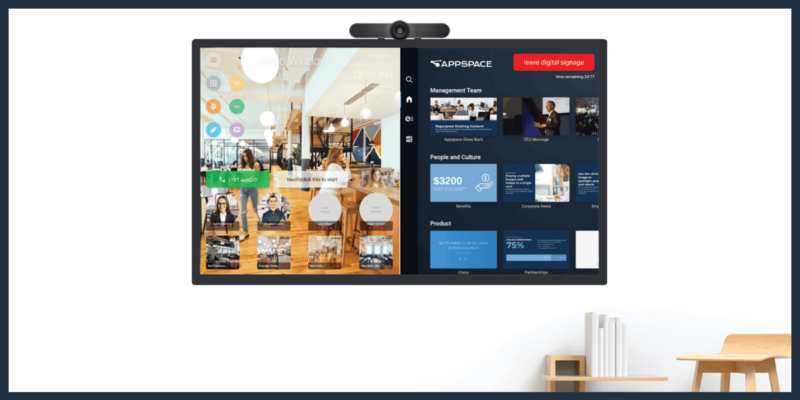InfoComm: The Value Proposition of Videoconferencing May Have Been a Little Off, But That’s OK
 By Brad Grimes
By Brad Grimes
Director of Editorial Services, InfoComm International
Have you seen the new TV advertisements for GoToMeeting, the online collaboration tool that most of us have probably used at one time or another? The company is highlighting videoconferencing integration and touting reduced travel as a top benefit.
Been there? Done that? I probably don’t need to remind you that post-9/11, extensive travel seemed unattractive. And when the economy went in the tank, paying for extensive travel also seemed unattractive. So many AV companies similarly touted videoconferencing as a way to reduce travel.
Totally understandable, but did that come to pass? Did people really want/need to travel less? Is that really the value proposition of videoconferencing, and by extension everything we consider under the umbrella of unified communications and collaboration (UCC)? Since the Great Recession, both spending on business travel in the U.S. and the number of business trips per year have steadily risen, according to the Global Business Travel Association (though the volume of trips this year looks to be up very modestly).
I’ve had several conversations recently that got me thinking, maybe reduced travel is not necessarily one of UCC’s top business benefits. A couple took place with InfoComm volunteers here at headquarters — somewhere they graciously traveled to in order to contribute their time. We were talking about UCC and its value proposition and the notion of reduced travel came up. These volunteers, who had just traveled, said, in essence, that they use UCC tools, including videoconferencing, but they don’t really travel less. If anything, they “meet” more.
Thanks to UCC, in between normal travel, which professionals of all stripes still find very necessary — whether to maintain human relationships, see things firsthand that don’t fit in a huddle room, etc. — many say they hold many more ad hoc, online meetings. This is in addition to travel, not instead of. Maybe consider it the equivalent of meeting in a colleague’s office down the hall — if the hall spanned states, countries or continents. It’s a richer experience than sitting around a desk and patching in, for example, a system designer via speakerphone. Integration of video, audio, collaboration tools, and other UCC elements promises to make such virtual experiences more productive. And the fact that such capabilities can be integrated using standard, ubiquitous networking protocols should make these meetings, which happen in between in-person meetings, easier to pull off.
So how are more meetings a good thing? If videoconferencing and UCC don’t dramatically reduce travel, but rather boost the amount of time people spend meeting (in this case online), what is the value proposition in that? If I learned anything at last month’s AV Executive Conference, it’s that companies must constantly re-evaluate and re-imagine the value proposition of the services and solutions they offer. If UCC won’t reduce travel (and to be fair, in some cases it may), then what will it do for clients?
Videoconferencing and UCC make companies — including AV companies — more agile. They support change, adaptation, and the rapid deployment of ideas in an ever-changing, fast-moving world. Sounds like so much rhetoric? Not to many.
In some of the same and other conversations I’ve had recently, AV pros have emphasized that (surprise!) projects are moving faster these days. Clients — probably because they feel a need to move quickly to compete in their respective markets — are putting demands on AV companies to move faster themselves. The time between RFP to system design to deployment is shorter. Designers and integrators need to collaborate more quickly and, as necessary, pivot on a dime and revise their solutions to meet demand.
Such maneuvering by an AV/IT design/integration team takes rapid consultation; such rapid consultation requires easily deployed, rich collaboration experiences; such experiences can be realized through the UCC and videoconferencing tools that AV professionals know so well. It’s a lot easier to say “videoconferencing reduces travel,” but enabling agility can also resonate in users’ minds as a legit value proposition.
Many clients already understand agile development. It has its roots in the IT industry, wherein large projects — applications development, Web systems integration — are achieved in smaller, incremental, rapidly deployed pieces. Projects aren’t delivered in one big solution at the end of a process. They’re rolled out in constantly tested, perpetually improved-upon pieces. Which is best enabled by close collaboration and frequent “face-to-face” meetings.
Videoconferencing and UCC promote agility. More (and different) meetings, not less help companies launch solutions faster. And more successfully. Ask some of your government customers what it’s like to award a big contract, wait years for a solution to deploy, only to find out it doesn’t work as required (if at all). It’s not necessarily that organizations embrace agile development because it’s better (although many argue it is); they also embrace agile development because they can. Because by using modern AV/IT collaboration tools, they can deploy rapidly, troubleshoot on-the-fly, improve/enhance without pause, and more.
Which begs the question (and fodder for future posts): How will the spirit of agile development affect the business of AV design and integration? How might processes change? For example, what would continual systems performance verification be like? Which is to say, constant commissioning? Can a large-scale AV systems integration project fit the agile model?
Are you incorporating agile principles into your solutions? More importantly, do UCC tools help? Join the conversation below.
This column was reprinted with permission from InfoComm International and originally appeared here.





